Reptiles are known for their impressive variety, and some species boast truly striking color patterns. Their coloration not only serves a purpose in camouflage or mating but also highlights the incredible diversity of the reptile world. Each species has its unique palette, making them both fascinating and beautiful.
Panther Chameleon
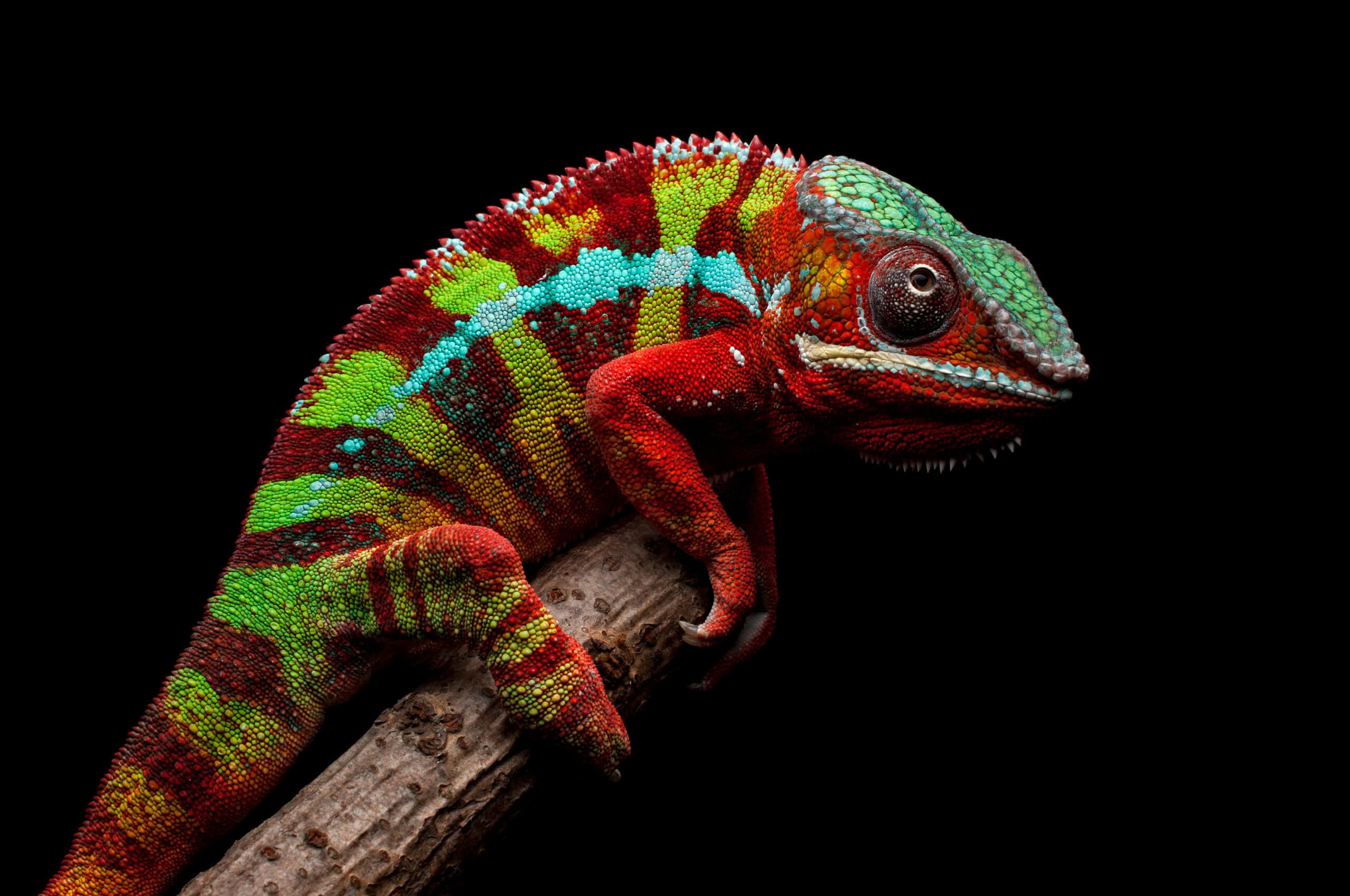
The Panther Chameleon is a vivid display of nature’s artistry. Males often exhibit a rainbow of colors, from electric blues to bright reds and oranges. Their color changes depend on mood, temperature, and surroundings. Native to Madagascar, they blend seamlessly into their environment. Each locale they inhabit influences their specific color range, creating distinct regional varieties.
Blue Iguana
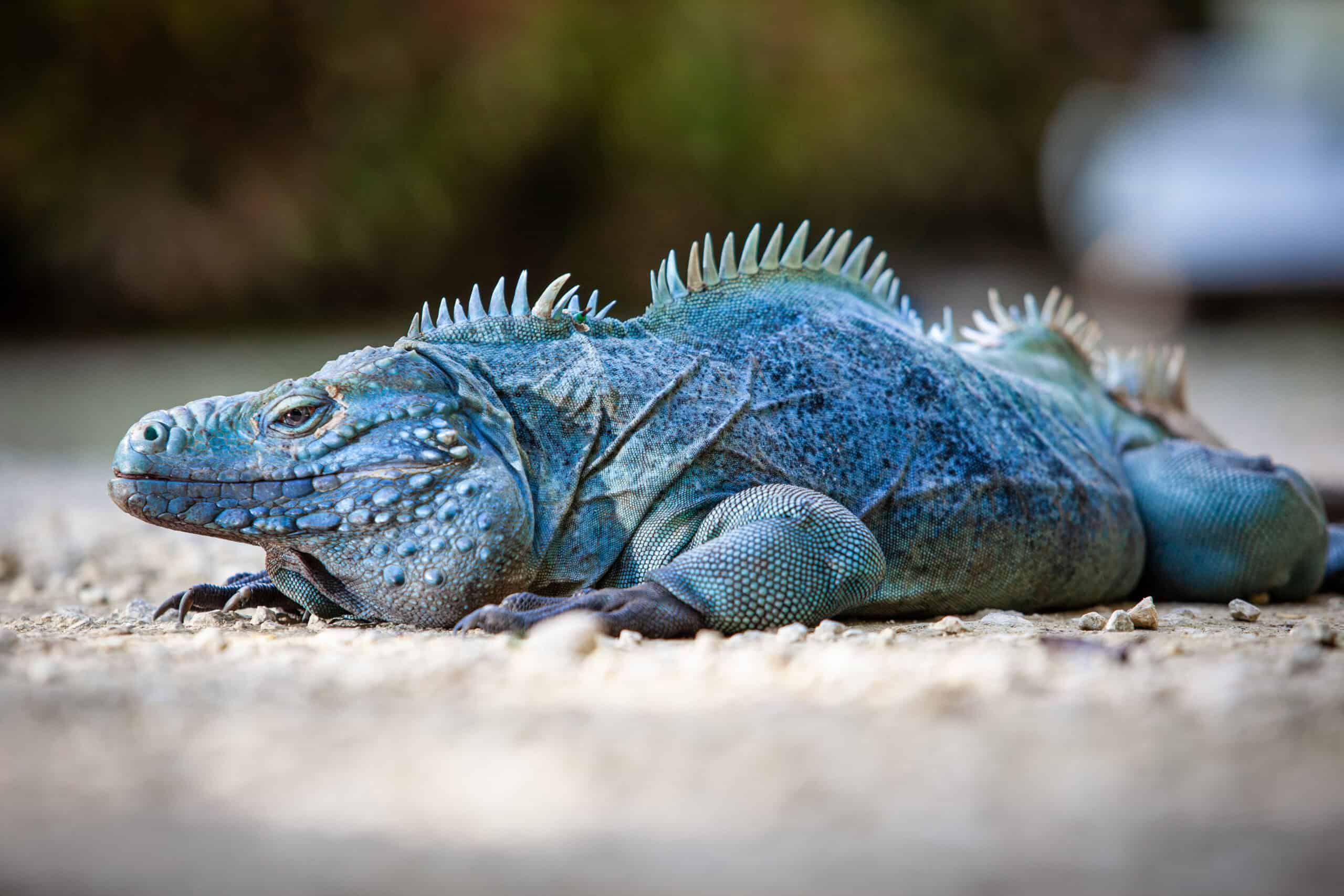
The Blue Iguana stands out with its striking turquoise or powder-blue scales. Found in the Cayman Islands, this reptile has adapted to its arid environment. Its bold coloration helps regulate temperature and protect it from predators. The color intensifies during mating seasons, signaling readiness to attract a mate. Despite its fierce look, it’s a calm and herbivorous creature.
Green Tree Python
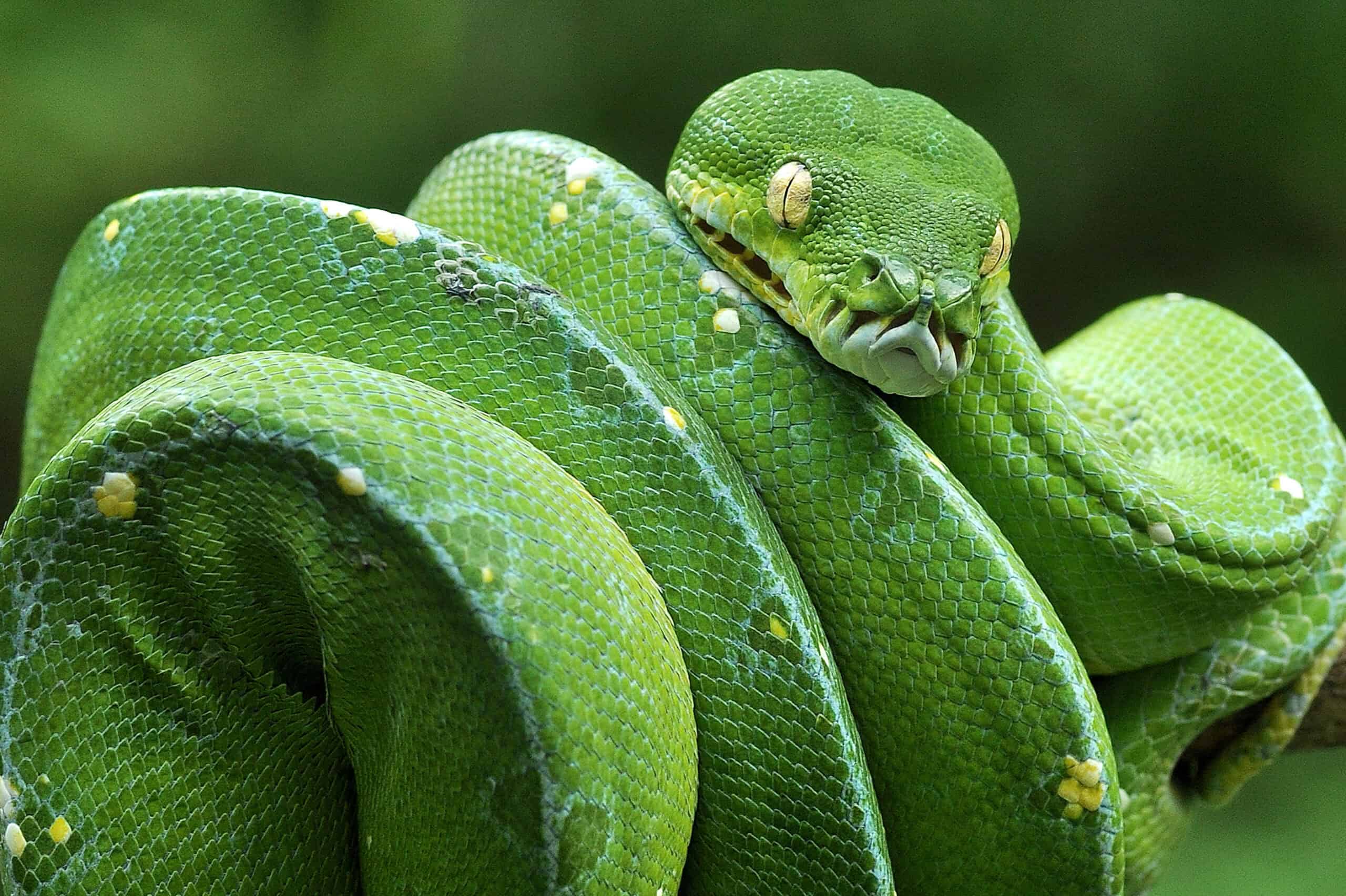
This python’s bright green scales, often flecked with blue, give it a unique look. As juveniles, they can appear yellow or red, changing as they mature. Found in New Guinea and northern Australia, they spend most of their lives in trees. Their color blends with the foliage, making them expert ambush predators. The sharp contrast between their body and eyes adds to their striking appearance.
Red Corn Snake
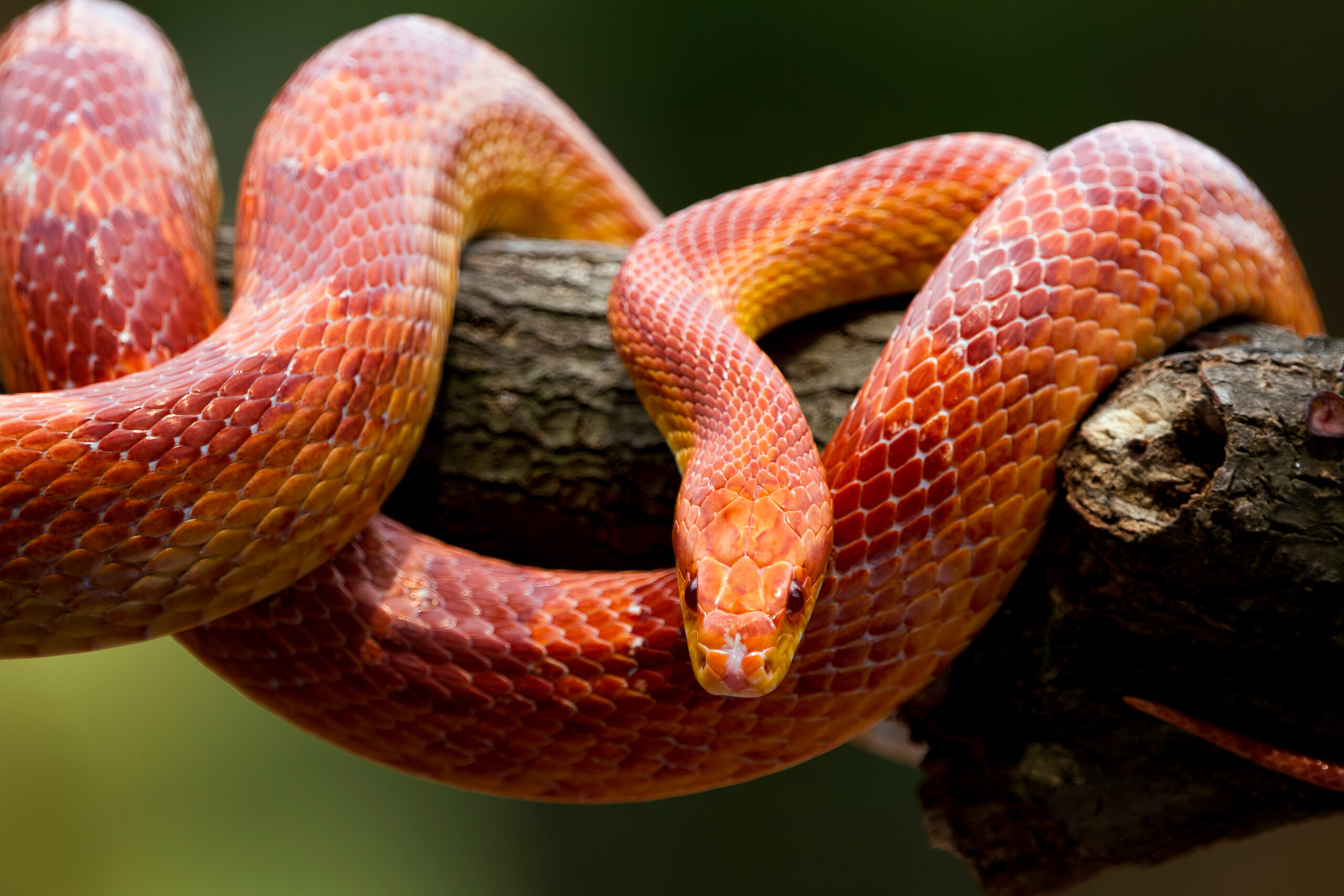
The Red Corn Snake showcases deep orange-red hues with black-bordered patches running down its back. This pattern resembles maize, which is how it earned its name. It’s non-venomous and often found in the southeastern United States. Its colors serve as camouflage against leaves and soil. This snake is also popular in the pet trade for its gentle nature and striking appearance.
Leopard Gecko

The Leopard Gecko has a spotted, yellow body resembling that of a leopard. This pattern helps them blend into the rocky, desert environments of Afghanistan and Pakistan. They are known for their wide, expressive eyes and smiling face. Over time, breeders have produced various color morphs, but the classic spotted pattern remains a favorite. Their gentle temperament makes them popular pets.
Brazilian Rainbow Boa
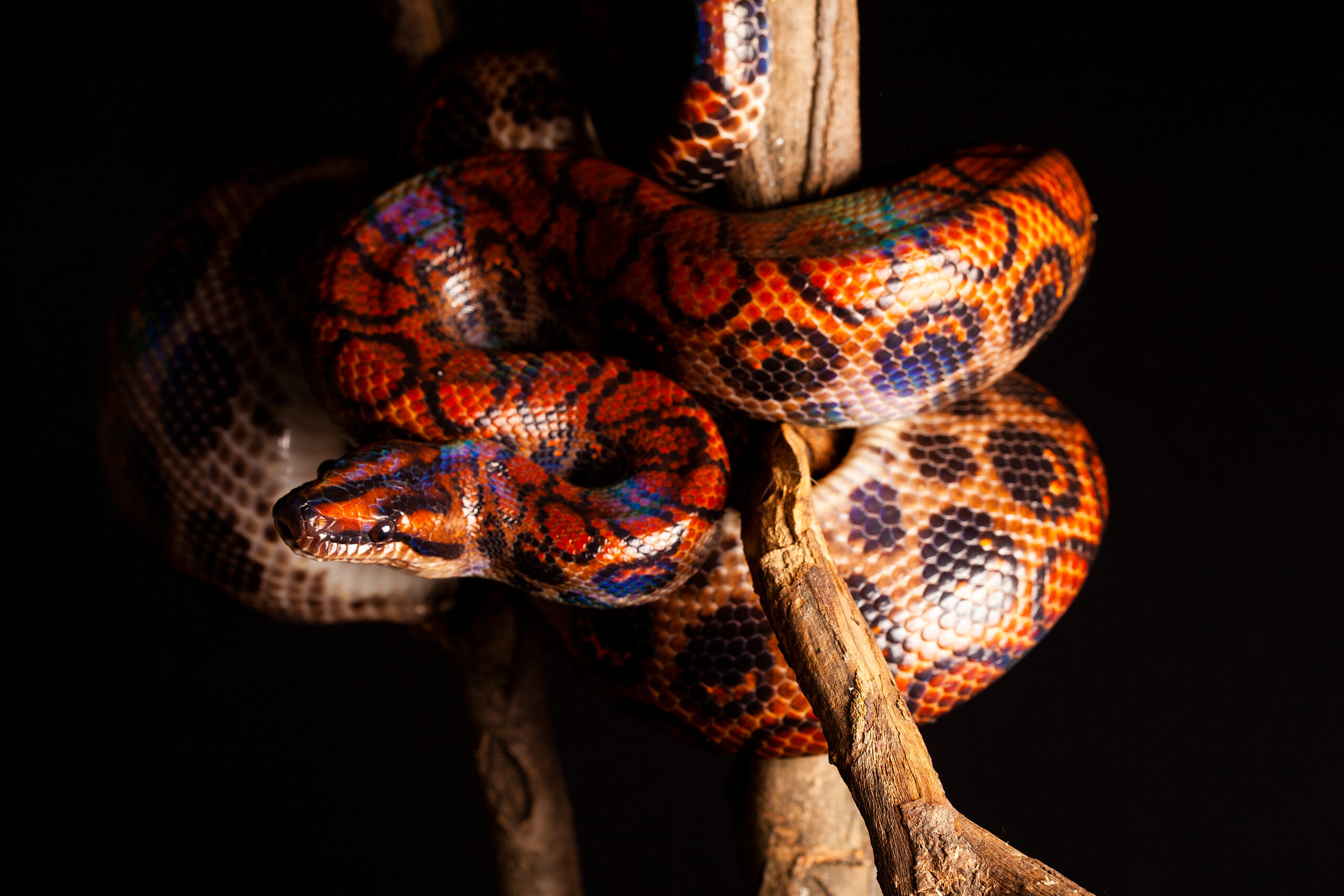
The Brazilian Rainbow Boa shines with an iridescent sheen that reflects rainbow colors. Its natural brown or red-orange base is enhanced by this oil-slick effect. Found in the rainforests of South America, it thrives in humid environments. This snake’s colors help it blend into the forest floor, hiding it from predators. The mesmerizing pattern draws reptile enthusiasts worldwide.
Electric Blue Day Gecko
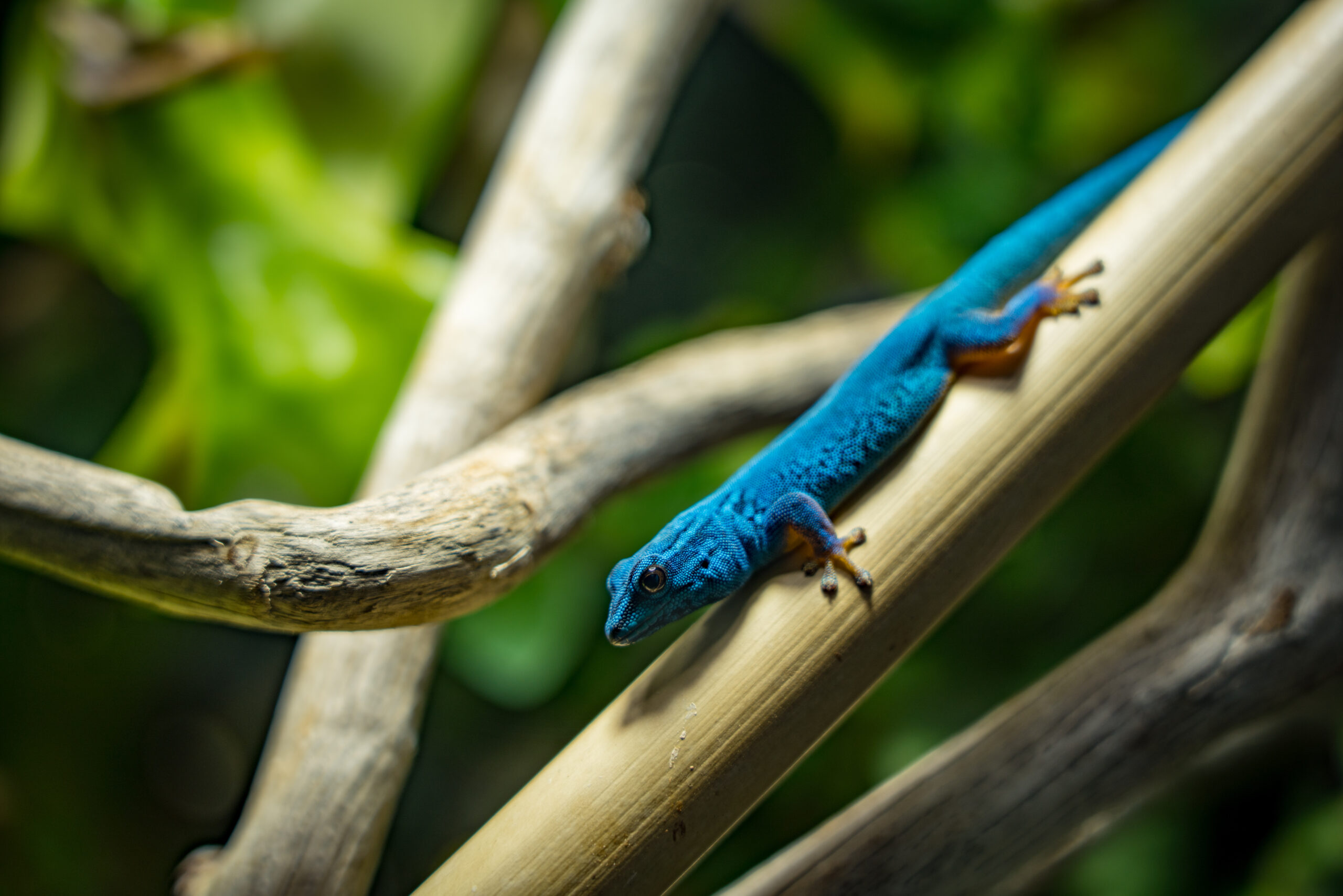
The Electric Blue Day Gecko lives up to its name with its vivid, electric blue color. Native to Madagascar, these geckos are small but pack a colorful punch. Males tend to be a brighter shade of blue, while females are more subdued with green tones. Their bright colors help them stand out in their environment, particularly during mating displays. They’re active during the day, making their striking patterns easy to spot.
Sri Lankan Pit Viper
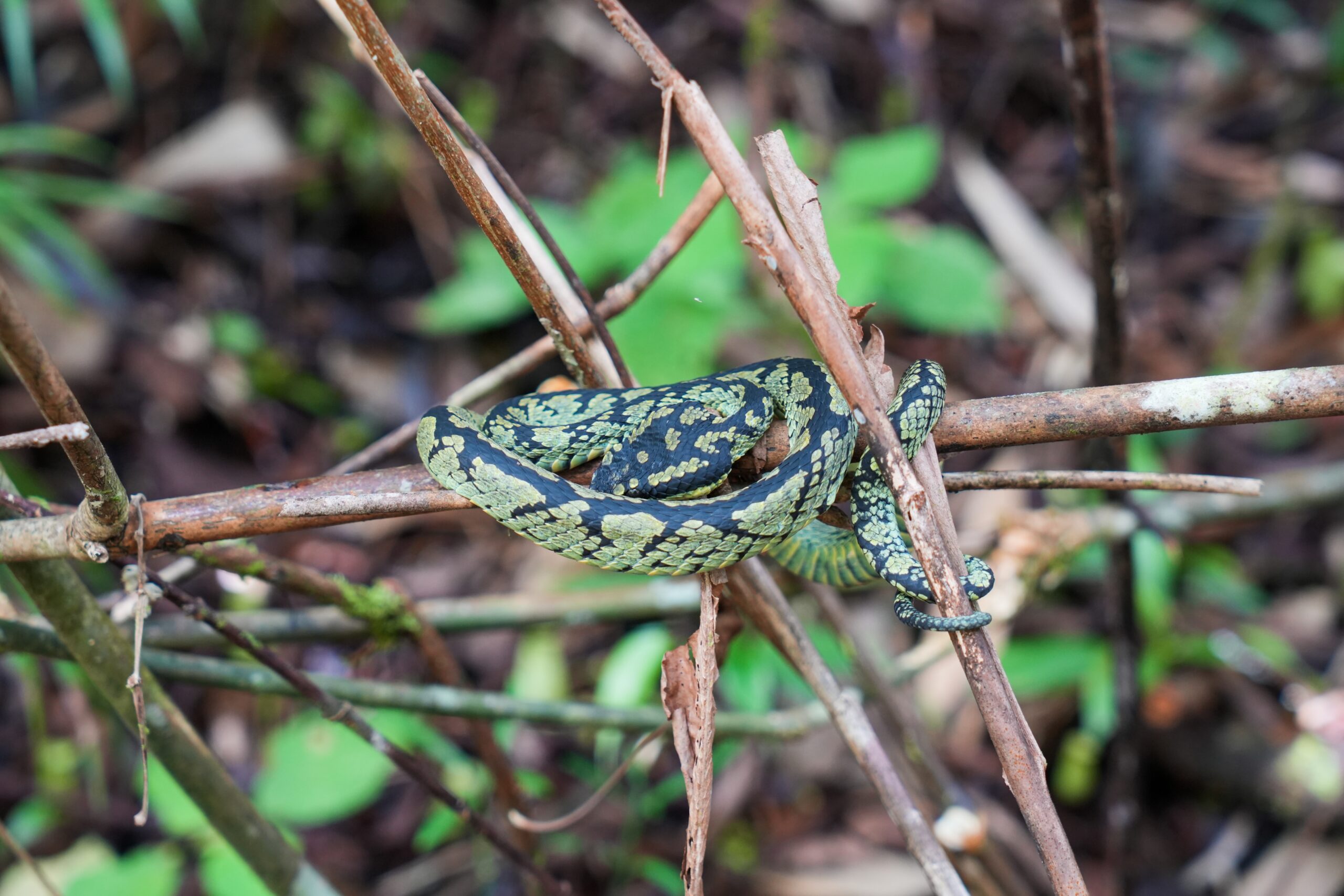
The Sri Lankan Pit Viper boasts bold patterns of green, yellow, and black, blending seamlessly into the jungle. Its scales create an intricate mosaic of colors. This viper is highly venomous, using its camouflage to ambush prey. Found in Sri Lanka, it often coils in trees, waiting for an opportunity to strike. The unique coloration makes it a visual spectacle in the wild.
False Coral Snake
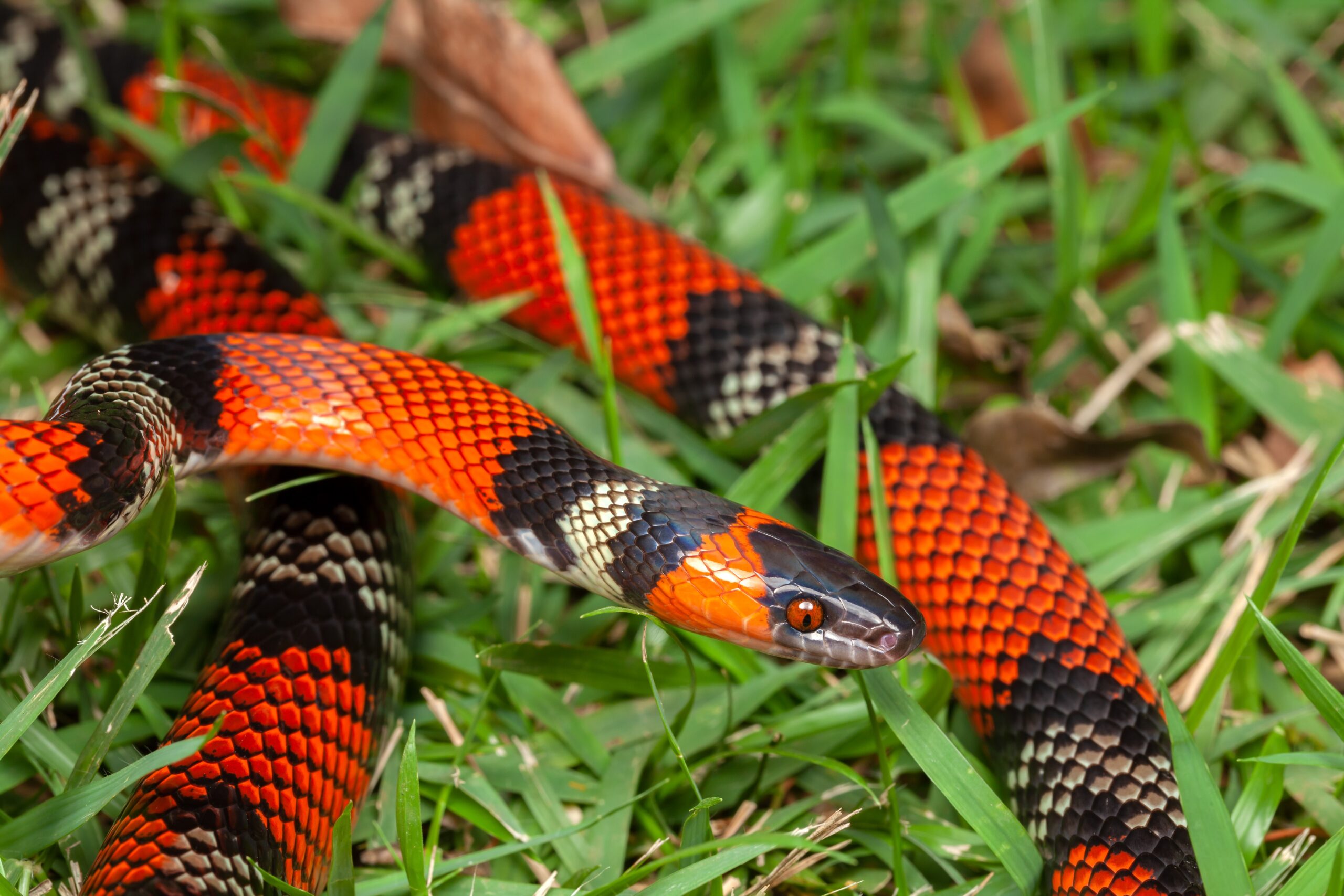
The False Coral Snake mimics the venomous Coral Snake with bands of red, black, and yellow. This mimicry protects it from predators who fear the venomous lookalike. Its harmless nature contrasts with its fierce appearance. Found in South America, it often hides under rocks and leaves, relying on its striking colors to ward off threats. This pattern makes it one of the most visually deceptive reptiles.
Blue-Tongued Skink
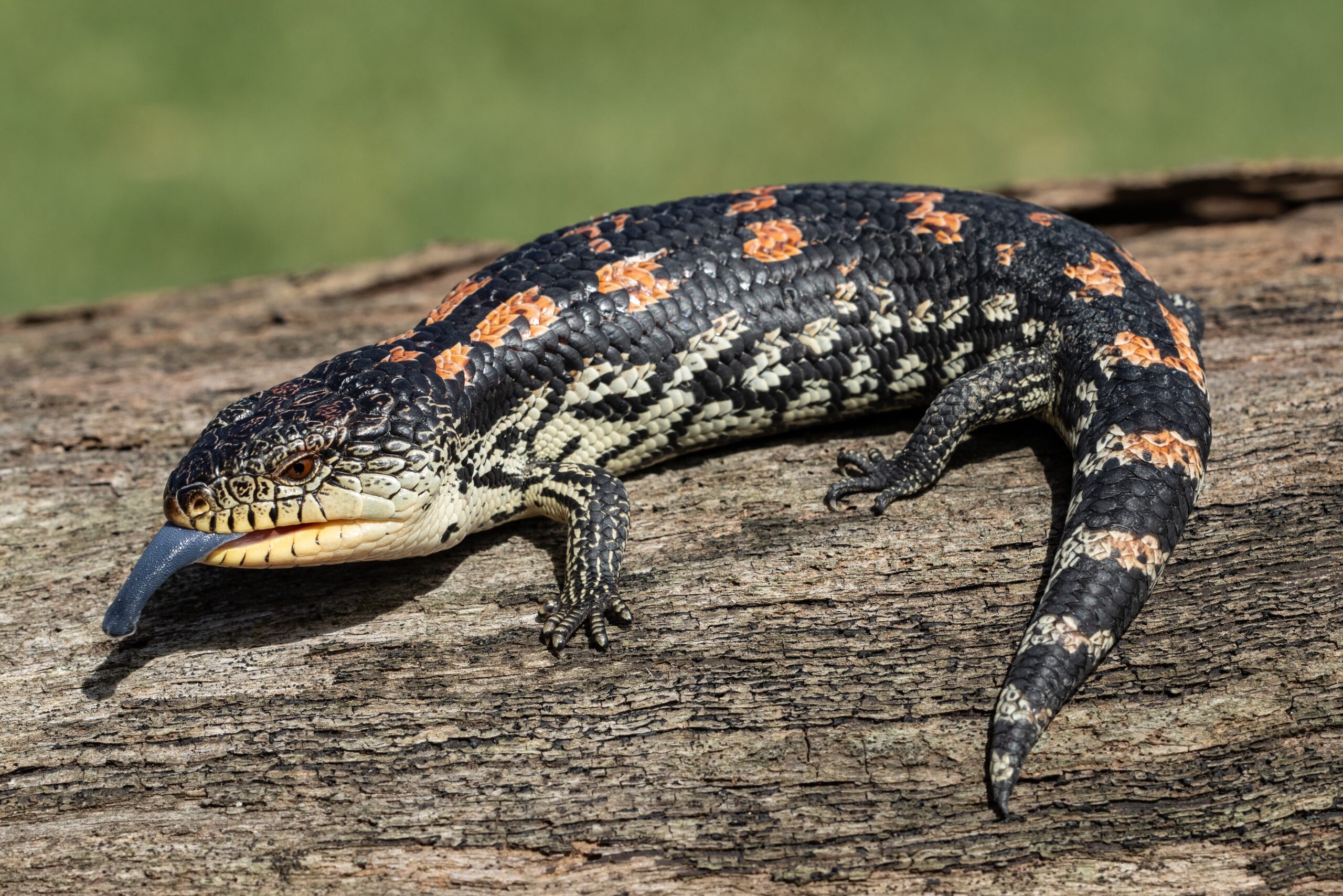
The Blue-Tongued Skink gets its name from the bright blue tongue it flashes when threatened. Its body is covered in a mix of browns, grays, and black stripes. Found across Australia, this skink is known for its docile nature and large size. The blue tongue serves as a warning to predators, signaling potential danger. Its sturdy body and unique defense mechanism make it an interesting reptile.
Gila Monster
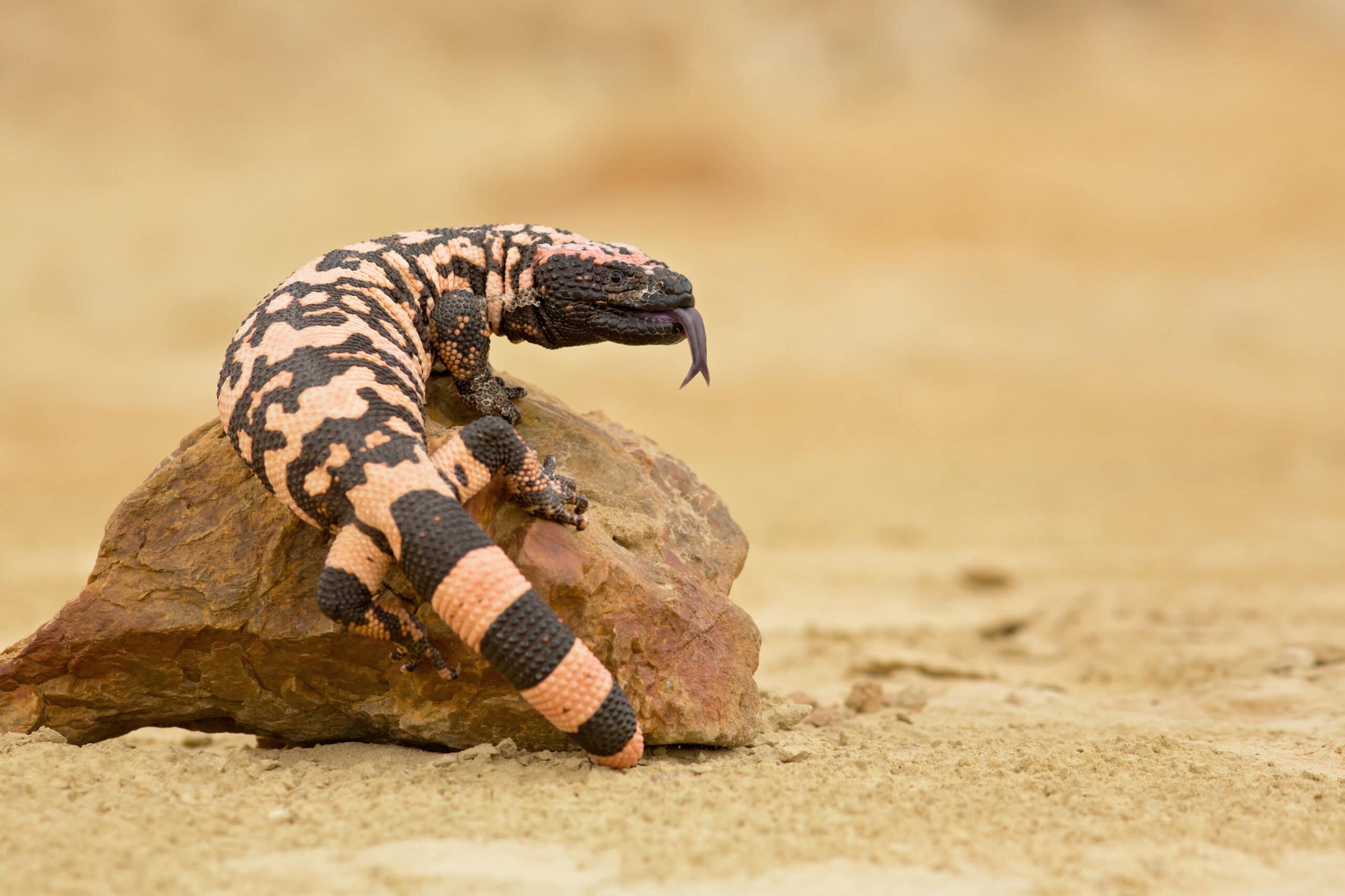
The Gila Monster has a striking black and orange patterned body, making it one of the most easily recognizable lizards. It’s one of the few venomous lizards, using its bite to subdue prey. Found in the deserts of the southwestern U.S., its bold colors warn predators of its toxicity. The bead-like scales give it a rough texture. Despite its venomous nature, it moves slowly and rarely poses a threat to humans.
Gaboon Viper
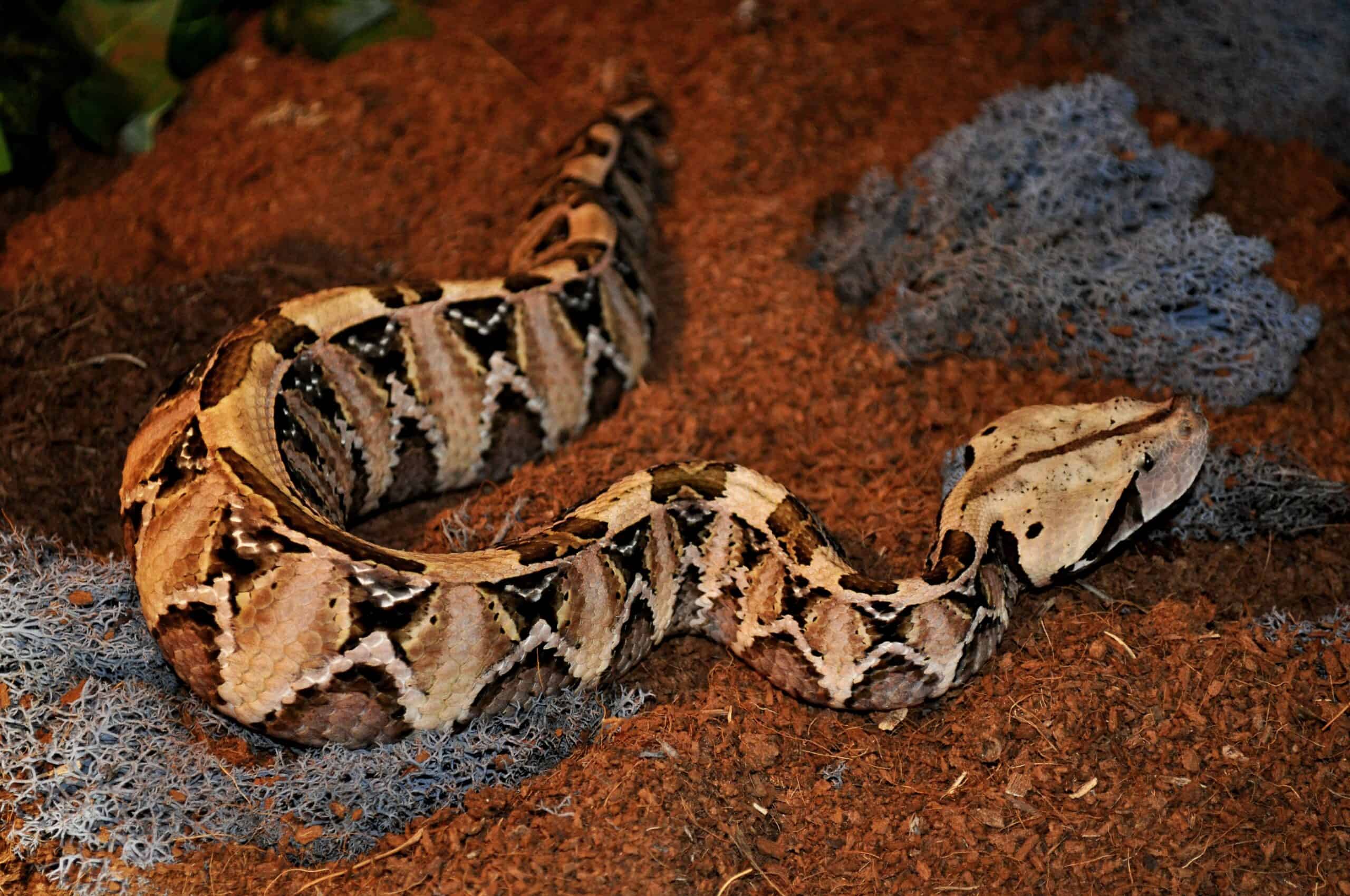
The Gaboon Viper has one of the most intricate and beautiful camouflage patterns among reptiles. Its body is covered in earthy browns, blacks, and purples, blending into the forest floor. Found in central Africa, it’s known for its massive size and extremely long fangs. The coloration not only hides it but also helps it ambush prey. Despite its deadly venom, it remains calm and rarely attacks without provocation.
Red-Eyed Crocodile Skink
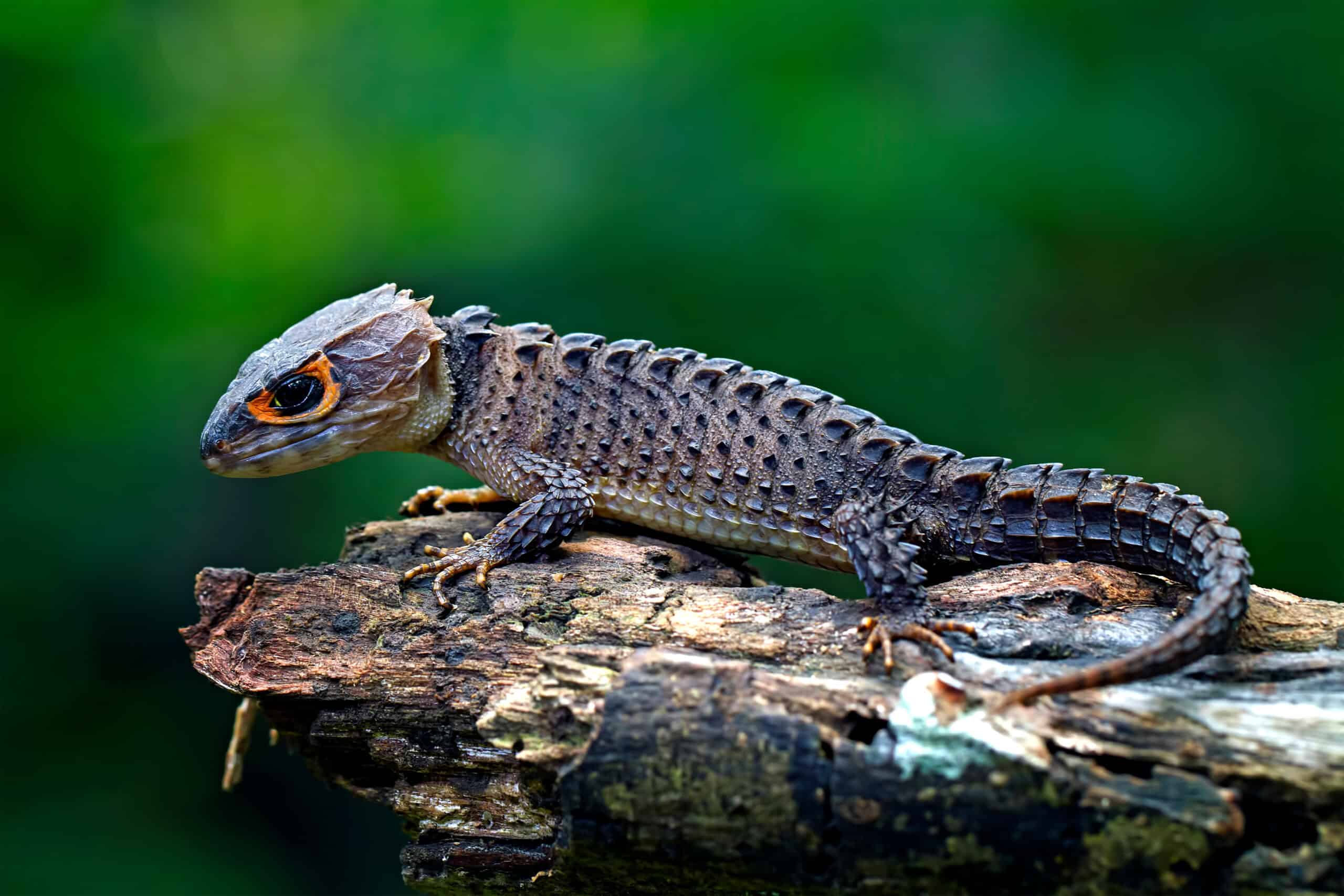
The Red-Eyed Crocodile Skink has a unique appearance with spiky scales and a ring of bright red around its eyes. Its body is covered in dark brown, almost black, scales that resemble miniature crocodile armor. Found in New Guinea, it is often secretive, hiding in moist forest habitats. The striking red eyes make it stand out, while its body remains camouflaged. This combination of features makes it a captivating pet for reptile enthusiasts.
Emerald Tree Boa
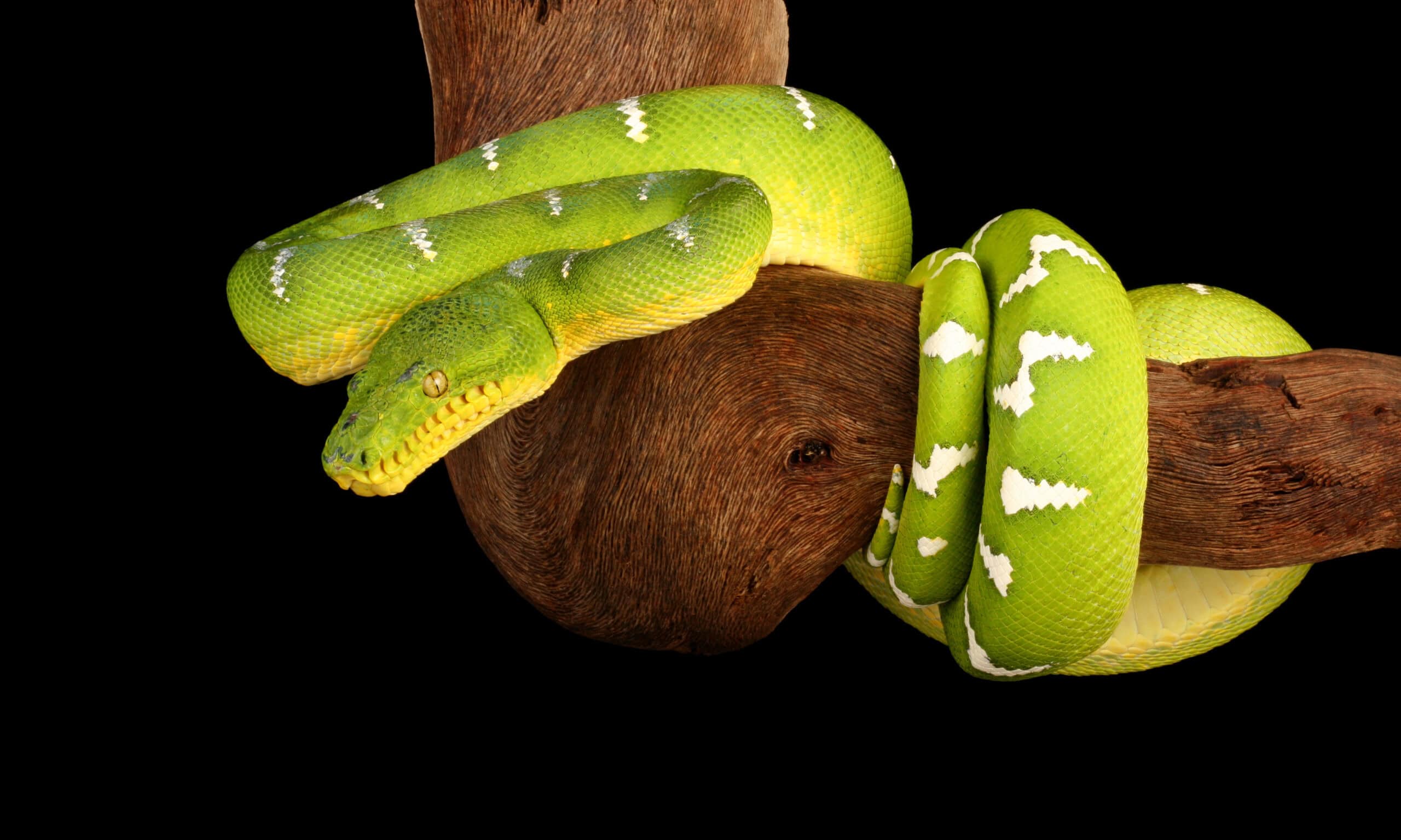
The Emerald Tree Boa is known for its bright green scales accented with white, zigzagging stripes. This snake is often found coiled in trees in the Amazon rainforest, blending perfectly with the canopy. It has a thick, muscular body that aids in constricting prey. The green coloration helps it stay hidden from predators and unsuspecting prey alike. Its bright color contrasts with its yellow underside, making it a stunning sight in the wild.
Yellow Rat Snake
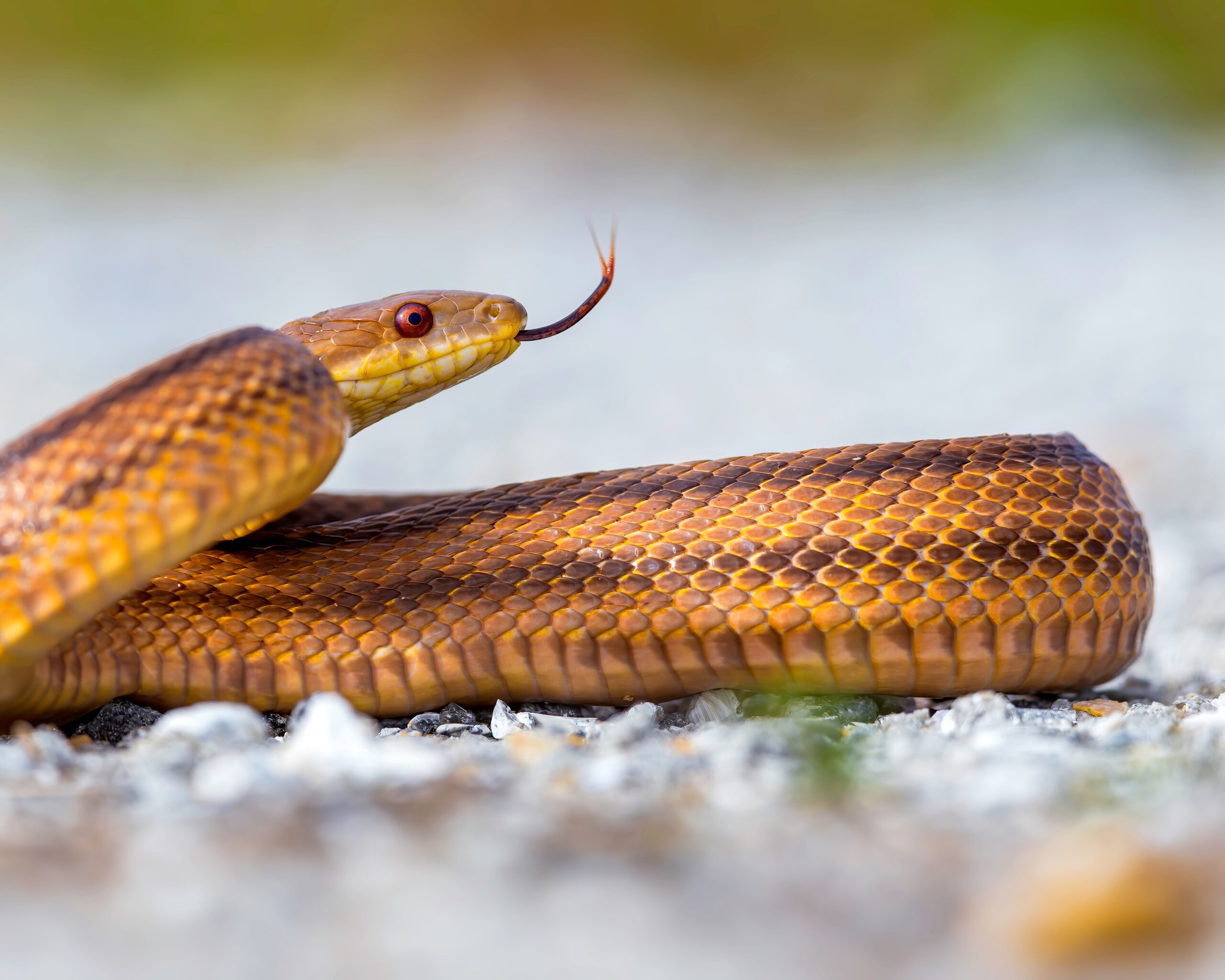
The Yellow Rat Snake displays a vibrant yellow body with four black longitudinal stripes running from head to tail. This snake is commonly found in the southeastern United States, where it thrives in forests and farmlands. Its striking coloration helps it blend with grasses and sunlit areas. While non-venomous, it’s an excellent climber and predator of rodents. Its bold look and calm nature make it a popular choice among reptile keepers.
San Francisco Garter Snake
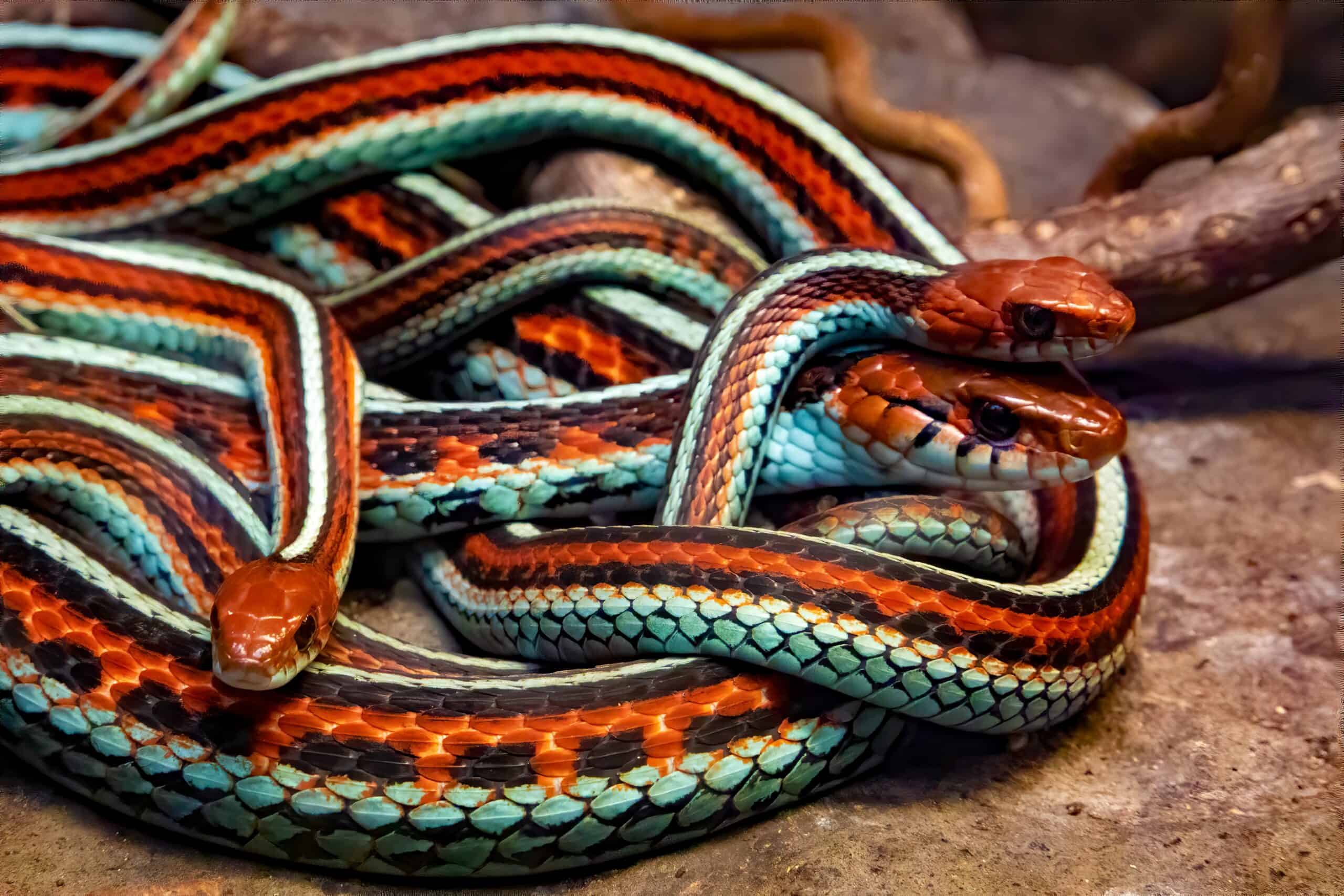
The San Francisco Garter Snake is one of the most colorful snakes, with a striking mix of blue, red, black, and white stripes. Endemic to California, this snake is often found near wetlands and ponds. Its vibrant colors serve as both camouflage and a warning to predators. It’s a highly agile swimmer, often preying on amphibians. The vivid color pattern makes it one of the most visually stunning reptiles in North America.
Neon Day Gecko
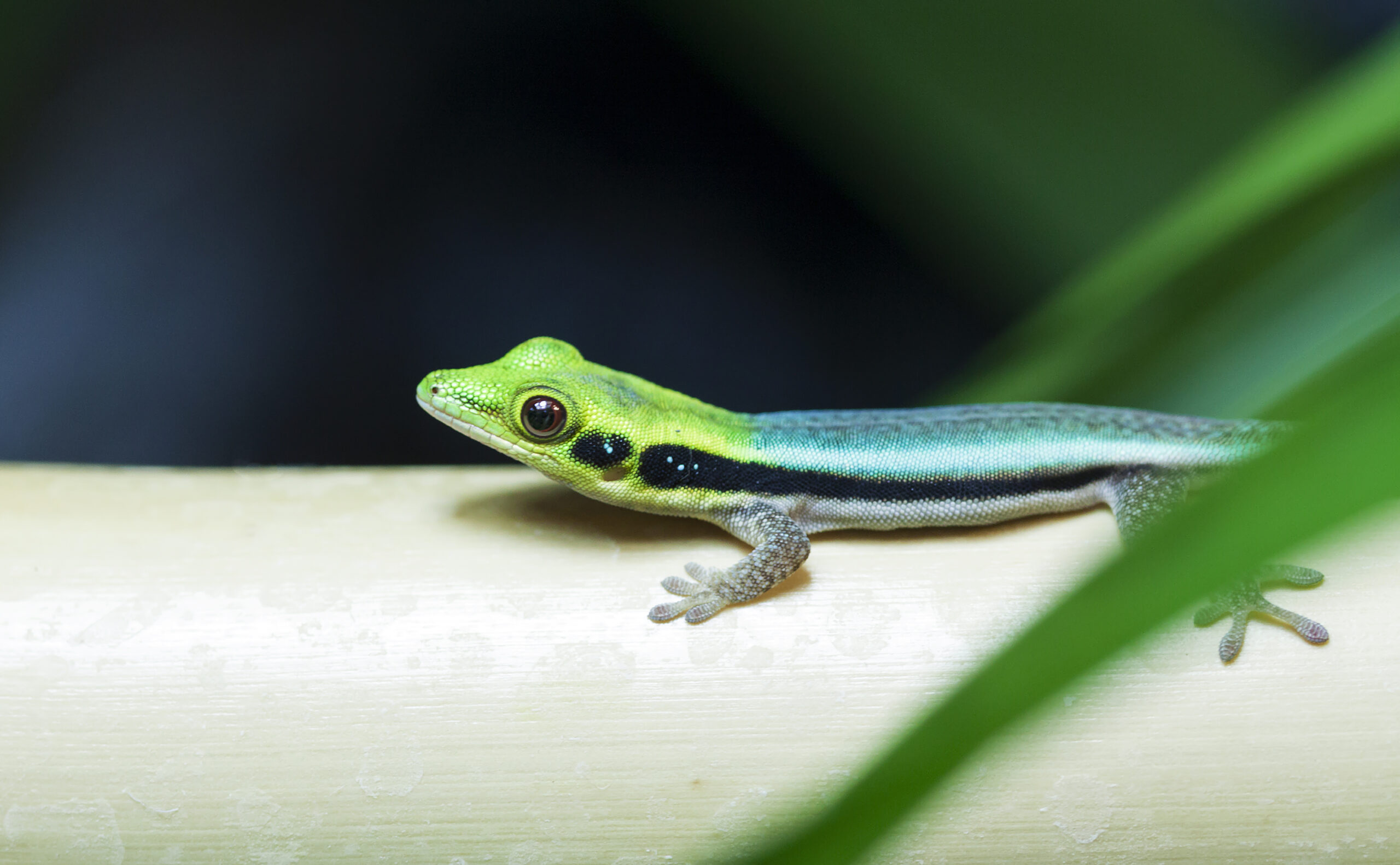
The Neon Day Gecko is a small lizard with bright, almost fluorescent, green and blue scales. Its body is accented with bold red and blue markings, making it highly visible. Native to Madagascar, this gecko thrives in tropical environments. Its vivid colors are used to communicate with other geckos, particularly during mating season. Despite its size, the Neon Day Gecko’s color pattern makes it an unforgettable sight in the reptile world.
Okeetee Corn Snake
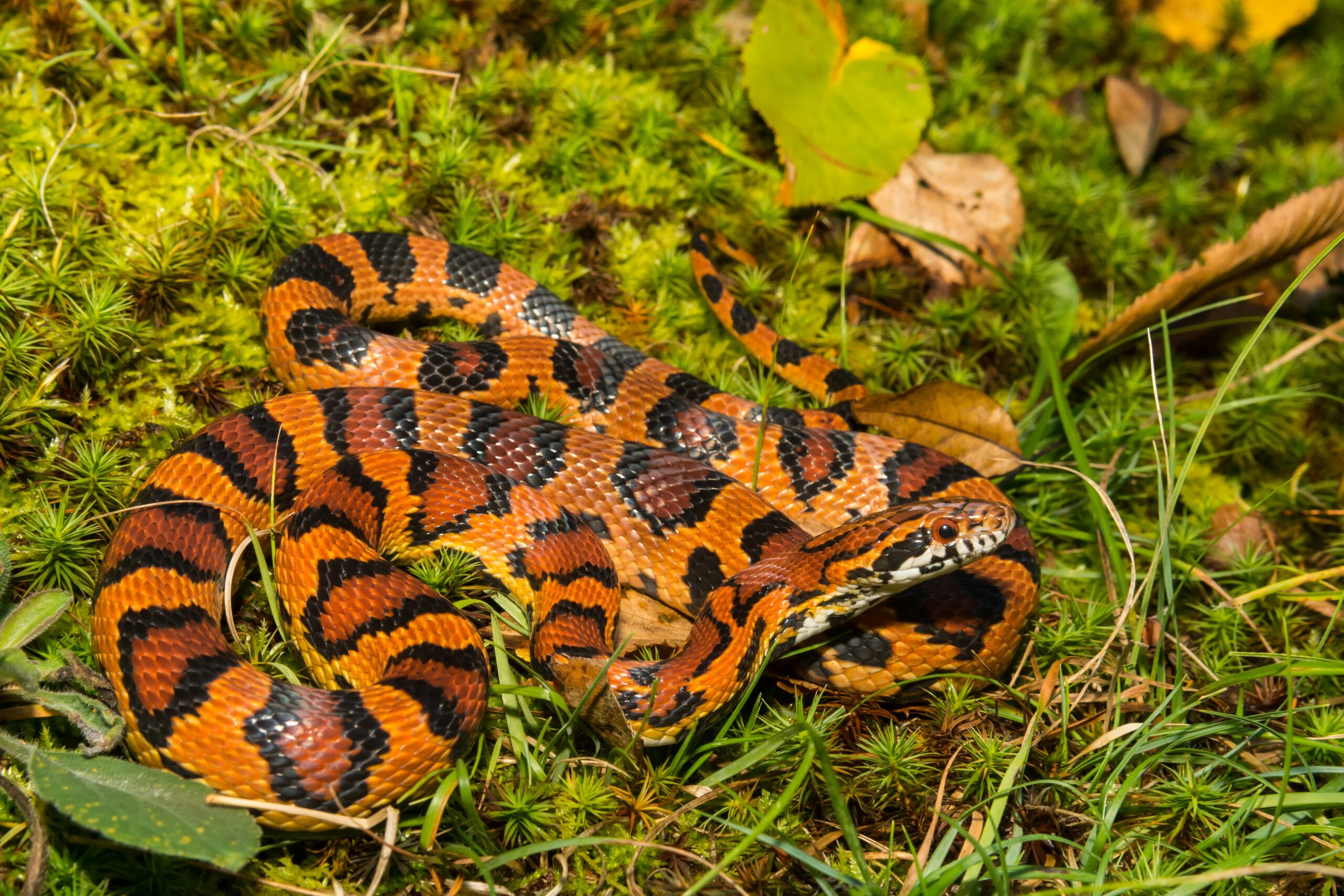
The Okeetee Corn Snake is known for its vibrant orange and deep red scales outlined in black. Its striking color pattern makes it one of the most popular corn snake morphs. Native to the southeastern United States, it thrives in farmlands and forest edges. Its colors help it blend into leaf litter, offering camouflage from predators. The snake is non-venomous and commonly kept as a pet due to its docile nature.
Fire Skink
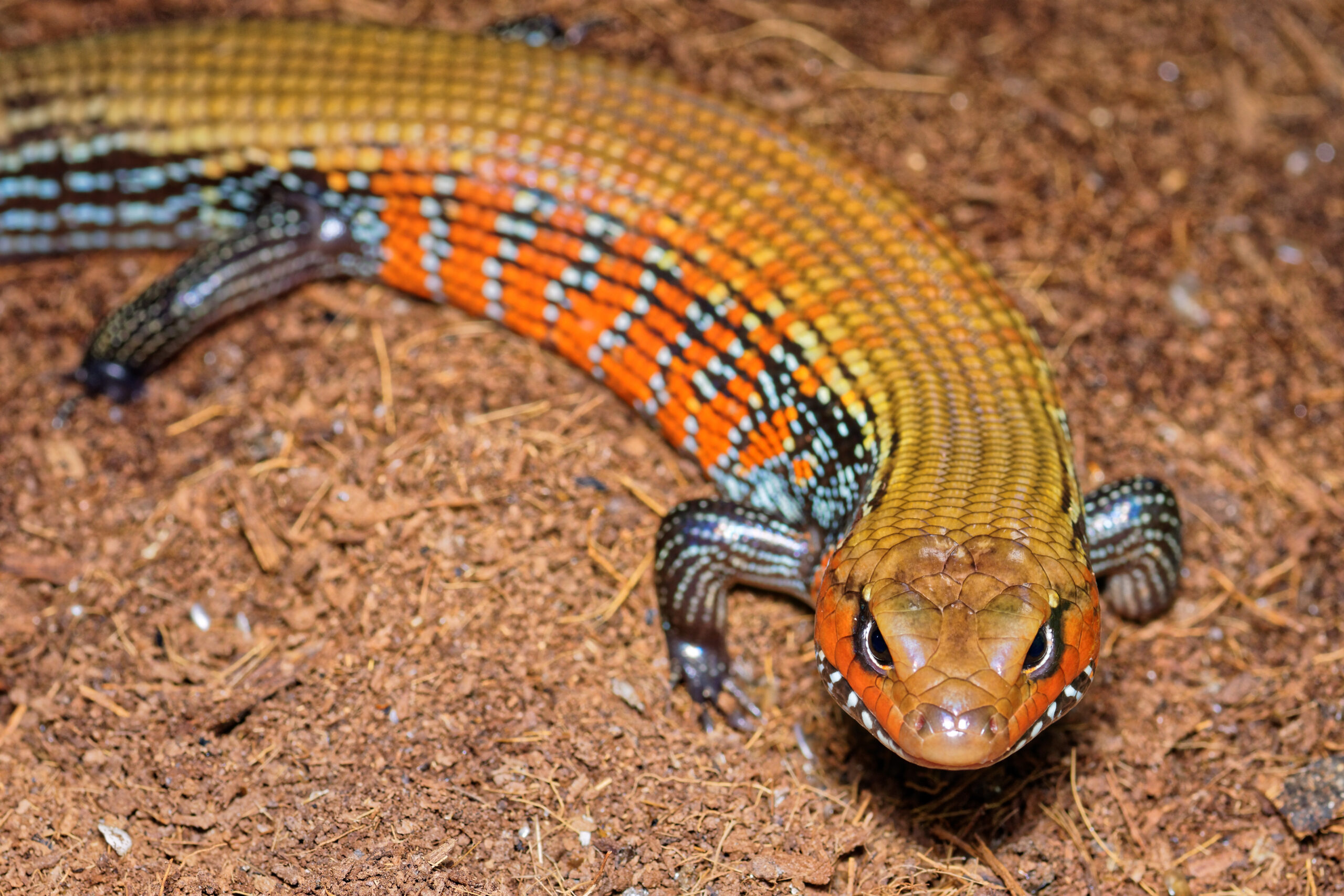
The Fire Skink lives up to its name with vibrant red and gold scales running down its body. This colorful lizard is native to the tropical forests of West Africa. Its metallic sheen gives it a fiery appearance, making it highly sought after in the pet trade. The bold coloration helps it blend into the forest floor, despite its vivid look. Its lively behavior and unique pattern make it a captivating reptile to observe.
Ringneck Snake
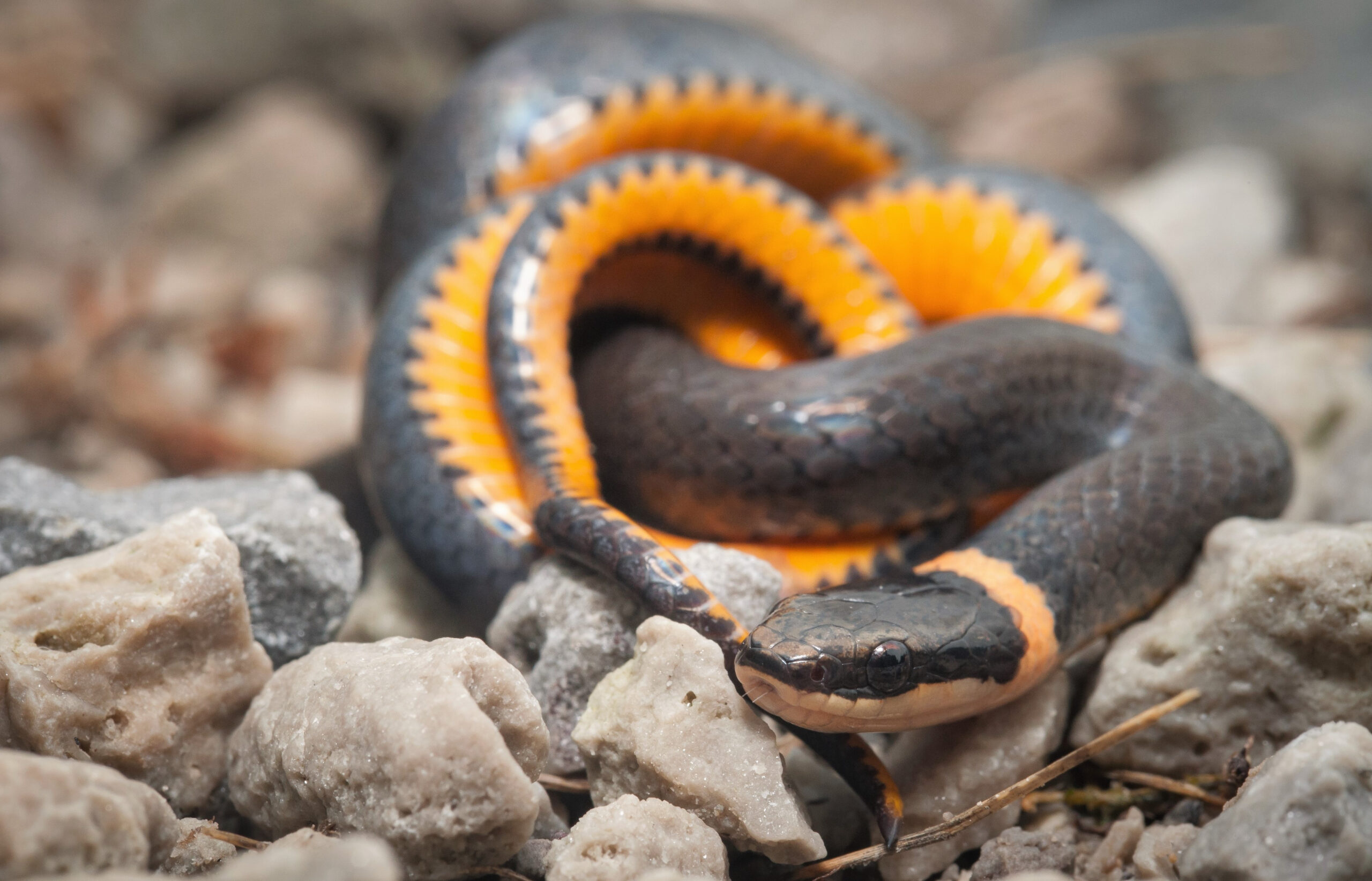
The Ringneck Snake is easily recognized by its slender body and the distinct yellow or orange ring around its neck. Its smooth, dark gray or black scales contrast beautifully with its bright underbelly, which can be yellow, orange, or red. Found across North America, it prefers moist environments like forests and grasslands. The vivid belly is revealed when it curls its tail, using the display to ward off predators. Despite its bold appearance, it is harmless and secretive, often hiding under rocks or logs.
Mata Mata Turtle
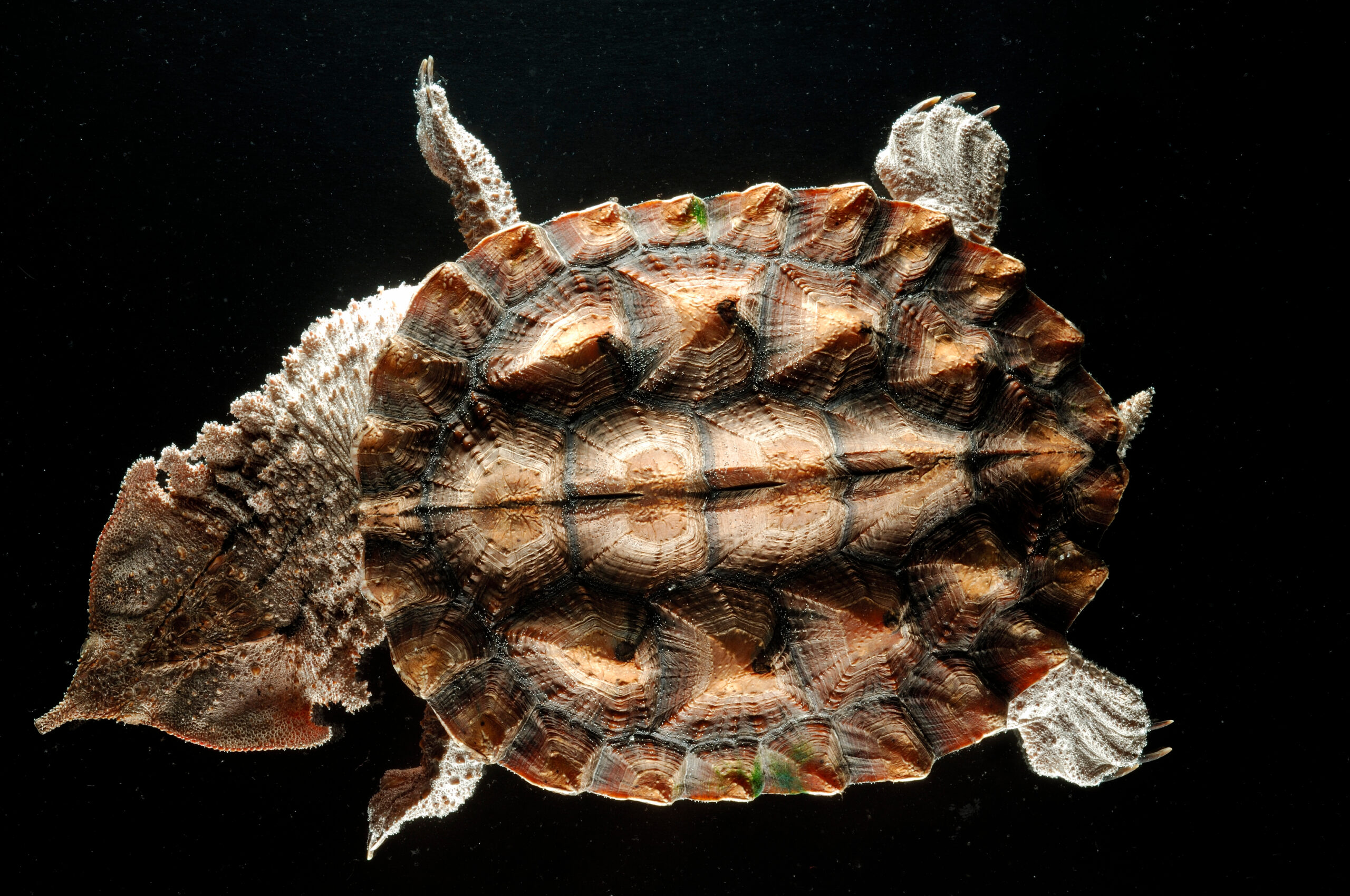
The Mata Mata Turtle has one of the most unusual appearances among reptiles, with its rough, leaf-like shell and spiky, flattened head. Its brown and gray coloration helps it blend perfectly into murky waters and riverbeds in the Amazon and Orinoco basins. This turtle’s camouflage mimics debris, allowing it to ambush fish and other prey easily. Its long, snake-like neck allows it to strike swiftly while remaining still. The Mata Mata’s bizarre look makes it one of the most fascinating turtles in the reptile world.
Tokay Gecko
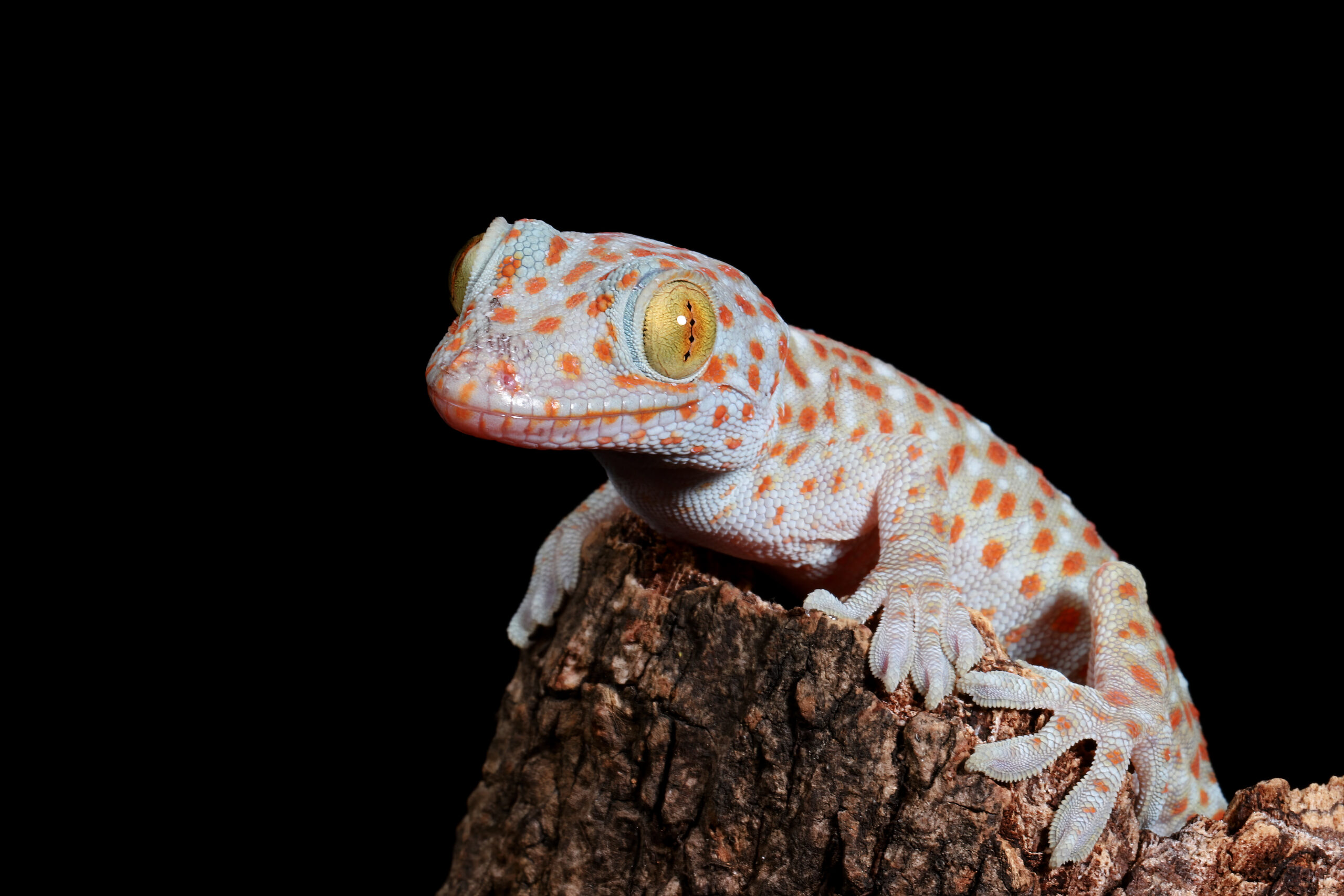
The Tokay Gecko is instantly recognizable by its vibrant blue skin covered in bright orange and red spots. Native to Southeast Asia, this large gecko thrives in tropical rainforests and urban areas alike. Its striking coloration not only serves as camouflage among flowers and foliage but also helps it stand out during territorial disputes. Known for its loud, distinctive call, the Tokay Gecko is both visually and audibly striking. Its strong grip and ability to climb smooth surfaces make it a fascinating reptile to observe.
This article originally appeared on Rarest.org.
More from Rarest.org
1963 Jefferson Nickel Value Guide
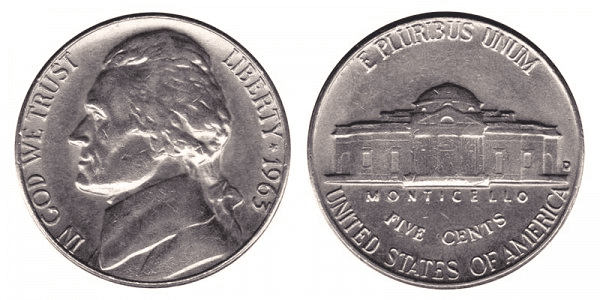
The 1963 Jefferson nickel is made of 75 percent copper and 25% nickel. It has a value of 5 cents ($0.05), a mass of 5 grams, a diameter of 21.21 millimeters, and a plain edge. Read More.
16 Stunning Birds of Prey Found in the Wild
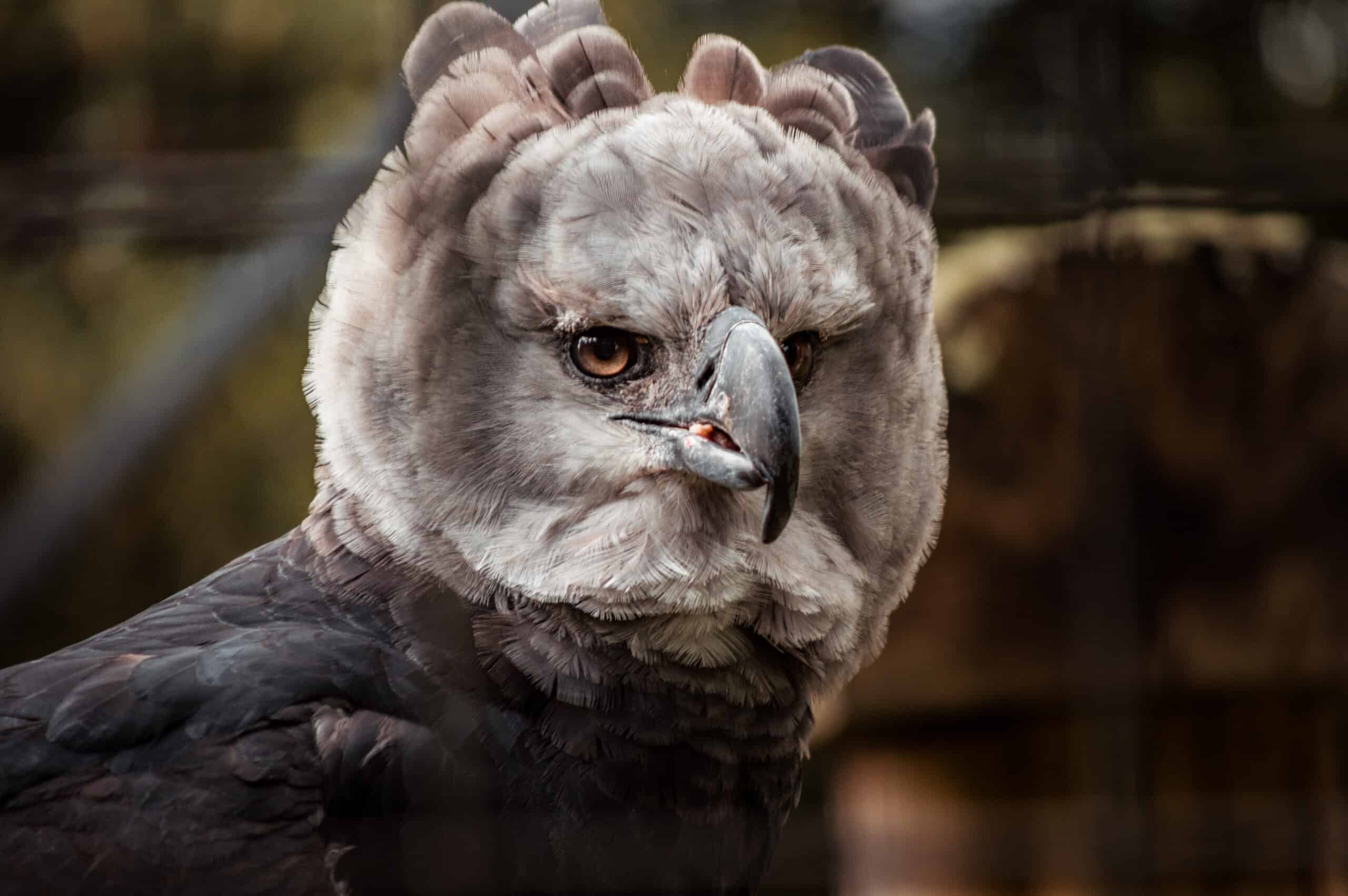
Birds of prey, also known as raptors, are some of the most captivating creatures in the animal kingdom. Read More.
12 Highest Earning Tennis Players of All Time

In the world of tennis, the most successful players aren’t just celebrated for their skills on the court but also for the immense wealth they’ve accumulated over their careers. Read More.
